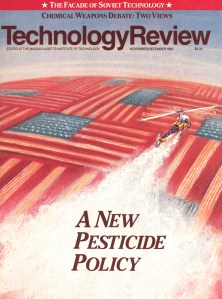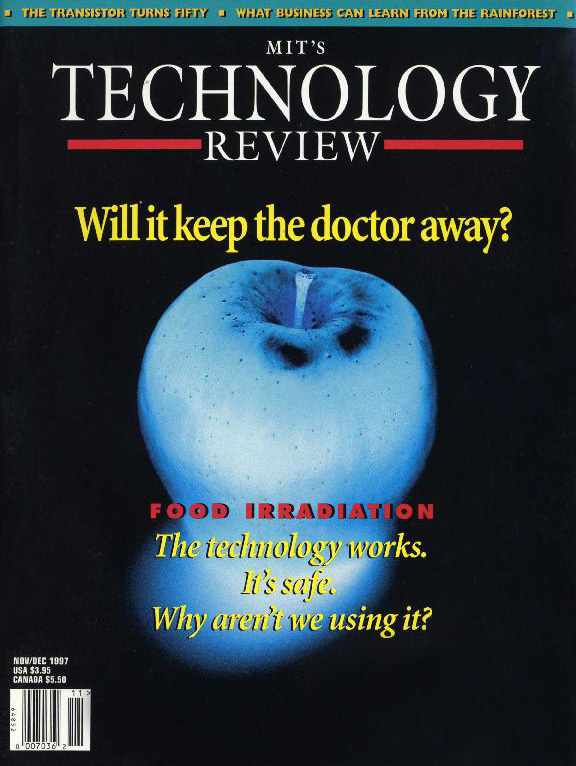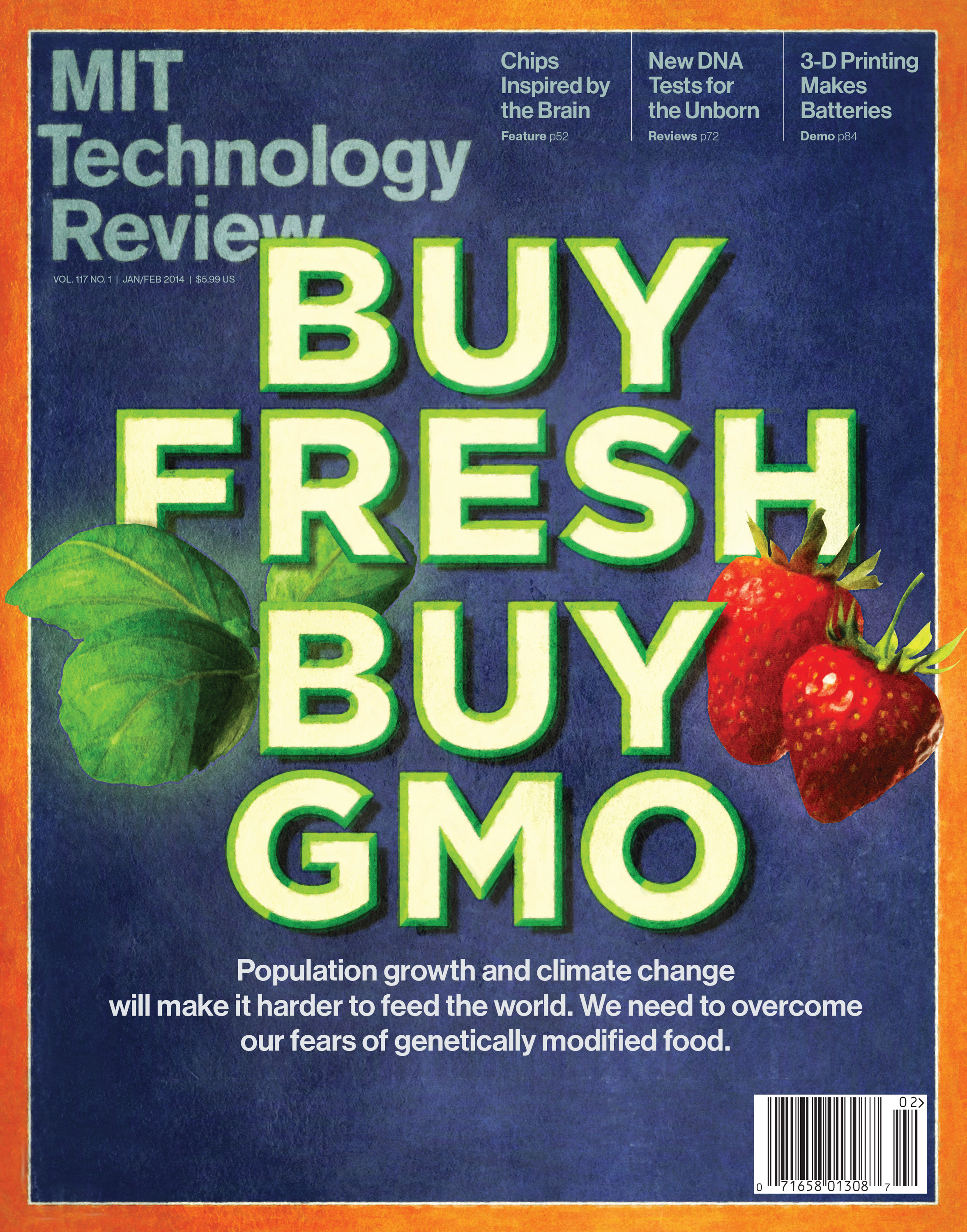From the archives

From “Getting Off the Pesticide Treadmill,” November/December 1985:
While DDT initiated the new age of pest control, it also spawned a new environmental consciousness. DDT became the principal villain in the problems that emerged as our society began to rely on chemicals for pest control. Soon after the chemicals were developed, questions about their effects on human health and the environment began to surface.
These concerns have proven to be well founded. Many species of insects no longer respond to the effects of pesticides. World pesticide use has increased dramatically, but the percentage of crops lost to pests has not declined. Insects consume as much as one-third of the Asian rice crop annually, and in the United States losses of fruit and vegetable crops from plant diseases may exceed 20 percent. Clearly, just pouring on more chemicals is no answer.

From “Food Irradiation: Will It Keep the Doctor Away?” November/December 1997:
Nearly 200 people in the US, most of them children or elderly, die each week from illnesses they contract from food. This spring, President Clinton called for “new steps using cutting-edge technology to keep our food safe.” One of the technologies that Clinton singles out is food irradiation.
“It will probably take some truly traumatic E. coli outbreak before the food industry gets serious about irradiation,” says James Tillotson, director of the Food Policy Institute at Tufts University. Without such a crisis, consumers wouldn’t think of demanding irradiated food and companies that explore irradiation [would be] open to attacks by activist groups. “No one is willing to get that kind of attention,” he says, “even when they might be doing the best thing for consumers.”

From “Why We Will Need Genetically Modified Foods,” January/February 2014:
Plant scientists are careful to note that no magical gene can be inserted into a crop to make it drought tolerant or to increase its yield—even resistance to a disease typically requires multiple genetic changes. But many of them say genetic engineering is a versatile and essential technique. “It’s an overwhelmingly logical thing to do,” says Jonathan Jones, a scientist at the Sainsbury Laboratory in the U.K. The upcoming pressures on agricultural production, he says, “… will affect millions of people in poor countries.” At the current level of agricultural production, there’s enough food to feed the world, says Eduardo Blumwald, a plant scientist at the University of California, Davis. But “when the population reaches nine billion?” he says. “No way, José.”
Deep Dive
Humans and technology
Building a more reliable supply chain
Rapidly advancing technologies are building the modern supply chain, making transparent, collaborative, and data-driven systems a reality.
Building a data-driven health-care ecosystem
Harnessing data to improve the equity, affordability, and quality of the health care system.
Let’s not make the same mistakes with AI that we made with social media
Social media’s unregulated evolution over the past decade holds a lot of lessons that apply directly to AI companies and technologies.
Stay connected
Get the latest updates from
MIT Technology Review
Discover special offers, top stories, upcoming events, and more.